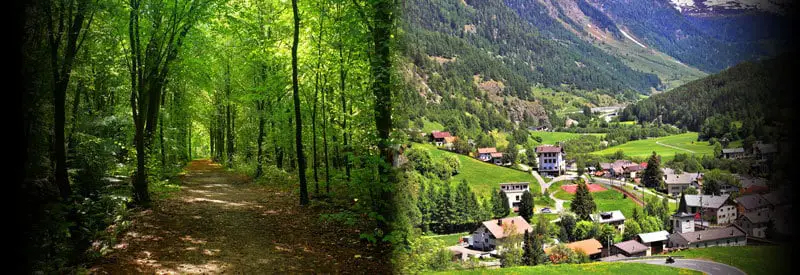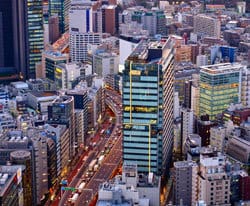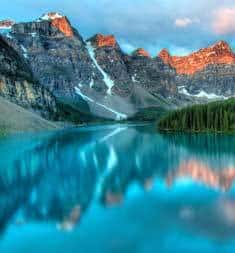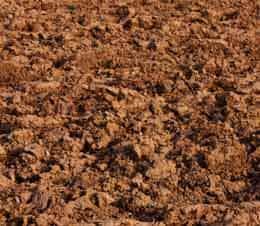Defining Microclimates – What They Are And How They Form

One often experiences a noticeable change in weather conditions after entering a forest during a hike or driving into a large city from the countryside. You encountered what is known as a microclimate.
A microclimate is defined as the atmospheric conditions found in smaller or restricted areas whose characteristics differ substantially from those of the surrounding region. It can be as small as a city block or a large park, but it is always contained within the larger region's weather conditions.
What you experienced is precisely the subject of this article. In another post on this weather site, the difference between local and regional weather was discussed in detail. (You can read more about the difference between the two atmospheric conditions in this article.)
However, even in a local region with its prevailing weather conditions, you can find even smaller areas with their pockets of unique atmospheric conditions. These conditions are known as microclimates.
It is important to note the term "climate" in "microclimate." As discussed in another article on this site, climate refers to the average weather conditions that are unique to an area, compared to the weather, which refers to the atmospheric conditions at any given time.
(You can read more about the difference between Weather and Climate in this article.)
As a result, microclimate refers to atmospheric conditions that prevail within a relatively small space for a sustained period compared to the surrounding weather.
It may start to sound a bit confusing, but it will become more understandable as we define microclimate and examine its characteristics and how it forms in more detail. And this is precisely what this article will aim to do.
This post examines what a microclimate is and how it forms. It also looks at some of the different types of microclimates.
What Is A Microclimate?
When meteorologists discuss regional and national weather conditions, it is only natural to get confused between the two. When one throws "microclimate" into the mix, it is very easy to become completely overwhelmed.
For this very reason alone, it is crucial to clearly define a microclimate and its characteristics before discussing it in more detail:
Microclimate Definition

A microclimate refers to the atmospheric conditions found in a relatively small or restricted area whose characteristics differ substantially from that of the surrounding region. It can be as small as a city block or a large park but is always contained within the larger region's weather conditions.
Microclimates do not only vary in size but also in the amount it deviates from the surrounding atmosphere. You can also find more than one microclimate in a localized area and sometimes in close proximity to each.
For example, a city with its heat-absorbing streets and buildings, as well as highly reflective materials like glass and metal, creates a microclimate called an Urban Heat Island with temperatures well above its surroundings.
It is even possible to find a microclimate within a larger microclimate. In a large city, for example, a park or rooftop gardens can create smaller pockets with their own atmospheric conditions. Central Park in New York City is a perfect example of such a microclimate.
These "green zones" within a larger metropolitan area are increasingly used to counter the heat and greenhouse gases created by large cities. The role vegetation plays in the creation of a microclimate will be discussed in more detail in a later section of this post.
What Causes A Microclimate?
It is clear that a microclimate occurs under a wide range of circumstances. It also takes place in several localized regions throughout the world.
There are numerous factors that cause microclimates to form. However, there are a few common factors that play a significant part in the creation of a pocket of localized atmospheric conditions. They are:
- Physical Terrain (Topography)
- Bodies Of Water
- Man-made (Artificial) Structures
- Vegetation
- Soil Composition
Each one of these factors, on its own, can have a strong enough effect to create a microclimate. However, by combining some of these factors, a more distinct microclimate that contrasts sharply with the surrounding atmosphere can be created.
The role each factor plays in the creation of localized atmospheric conditions is best understood by looking at each one individually.
1) Physical Terrain (Topography)
The topography of a region is arguably the most important natural contributor to the formation of a microclimate. It is primarily the shape and the change in altitude of a local surface that is responsible for the creation of microclimates.

For example, a mountain or large hill can create two distinctly different localized climates in close proximity. In the Northern Hemisphere, the southern slope of a mountain receives a significant amount more sunlight than the northern slope.
As a result, communities living on the southern slope experience a much warmer and generally drier climate throughout the year. You will also find vegetation that flourishes in warm, dry conditions on the south-facing slope.
In contrast, communities living on the northern slopes experience a cooler and often wetter climate. You will also find vegetation adapted to cool (and in many cases shaded and moist) conditions on north-facing slopes.
(All the above-mentioned conditions depend on variables like the steepness of the slope, latitude, and the overall humidity of the surrounding atmosphere.)
In the Southern Hemisphere, the opposite happens. North-facing slopes receive most of the sunlight throughout the year, while the southern slopes of a mountain experience more shade and a colder climate.
It is not only a raised terrain like a mountain that can lead to a microclimate. Valleys and low-lying areas experience a cooler climate compared to surrounding regions due to cold, dense air flowing into these and other natural depressions on the earth's surface.
Many more topographical features influence microclimates, but the examples in this section provide ample evidence of the role topography plays in their creation.
2) Bodies Of Water
Bodies of water have a significant impact on the creation of a microclimate. Since water is able to maintain its temperature much longer than the fluctuations experienced by the surrounding surface, it can create a moderate microclimate within more extreme climates.
For example, in large cities and dense urban areas that have their own artificially created warm microclimate (known as an Urban Heat Island), dams and reservoirs create a much cooler environment within the surrounding urban infrastructure.

On a larger scale, bodies of water have a much more significant effect. When you observe large lakes or dams, you'll notice that they create a moderate climate in and around them, very similar to those experienced in coastal regions.
Due to their ability to warm more slowly and maintain their heat for a sustained period, large bodies of water like the Great Lakes create a moderate climate that results in a cooler environment during the summer months and warmer temperatures during the winter.
This microclimate can spread as far as 48 kilometers (30 miles) inland from the shores of these large bodies of water. As is the case with the Great Lakes, if the size of water bodies is large enough, they can even create their own localized weather system.
3) Man-made (Artificial) Structures
The subject of large artificial structures like big cities and densely populated urban regions was already touched on earlier in this article. It is actually one of the most visible examples of a microclimate that contrasts sharply with its surroundings.
The infrastructure of a city creates the perfect conditions for a warm environment. Streets, pavements, and concrete buildings absorb and maintain heat from sunlight for very long periods. Reflective surfaces like metal and glass also create an additional buildup of heat.
As a result, cities have a much warmer microclimate than the surrounding atmosphere, which also lasts throughout the year. This phenomenon is better known as the Urban Heat Island, which you can read about in detail in this article.
4) Vegetation
Vegetation can vary dramatically in scale. It can be the size of your back garden, a park in your city, or the size of a vast forest. (For example, the Black Forest in Germany is 6 009 square kilometers or 2320 square miles.)
It means the scale and impact of this microclimate depend on the size of the area of land covered by vegetation. Regardless of size, though, the overall effect of any percentage of vegetation remains relatively the same.
One effect of vegetation is called evapotranspiration (evaporation and transpiration) process. This process takes place as a result of soil between vegetation, treetops, and plant leaves, releasing moisture into the air. It has a significant cooling effect on the surroundings.

Another effect of vegetation is the shading provided by larger plants and trees, specifically in a park or forest. If trees are closely spaced together, they create a type of canopy that shades the underlying surface and plants.
The shade allows the soil to remain cold and humid. In return, this cools the air above it, which also moves into its immediate surroundings through wind activity. This cold air, combined with sunlight blocked by the canopies, creates a much cooler microclimate.
The cool microclimate, which vegetation provides (as a result of both evapotranspiration & shading), is increasingly used in cities and dense urban environments to offset the heat created by the Urban Microclimate.
5) Soil Composition
Compared to other factors, soil composition does not seem to play such a significant role in the creation of a microclimate. It does, however, have some impact on the climate created on a very localized level.
Soil's capacity to hold water can have a tangible effect on the immediate surroundings, as moisture near the surface helps to promote evaporation, which has a cooling effect.
The composition of the soil determines its ability to absorb and maintain moisture. It consists primarily of sand, clay, silt, and dead organic matter.
Soils like sand with large particles and big pores allow water to drain through them rapidly without being able to maintain any moisture. Clay, on the other hand, has fine particles with small, if any, pores, which result in minimal absorption and more surface runoff.

Soil with the right amount of sand, clay, and organic matter can absorb and maintain moisture. This not only allows water close to the surface to evaporate and cool the atmosphere but also promotes plant growth, which also has a cooling effect on the air.
Soil's ability to absorb or reflect heat from the incoming solar radiation can also result in the creation of unique localized atmospheric conditions and microclimates.
For example, sand and other loose, dry types of soil also don't absorb heat but reflect most of the incoming solar radiation. As a result, regions like deserts become very hot during the day but cools rapidly and become very cold during the evening.
Conclusion
It is clear that microclimates appear in various regions throughout the world. They vary in size and can have a significant impact on a localized area and also deviate dramatically from the surrounding atmospheric conditions.
Making use of existing microclimates and introducing new ones within existing local regions can have real benefits. It can battle the adverse effects of artificially-created environments (e.g., parks in a large city) and create new zones to be utilized for activities like agriculture.
This article described what a microclimate is and the different ways in which it gets created. It also highlighted the various factors that are determining factors in the formation of these localized pockets of atmospheric conditions.
Never miss out again when another interesting and helpful article is released and stay updated, while also receiving helpful tips & information by simply following this link .
Until next time, keep your eye on the weather!
